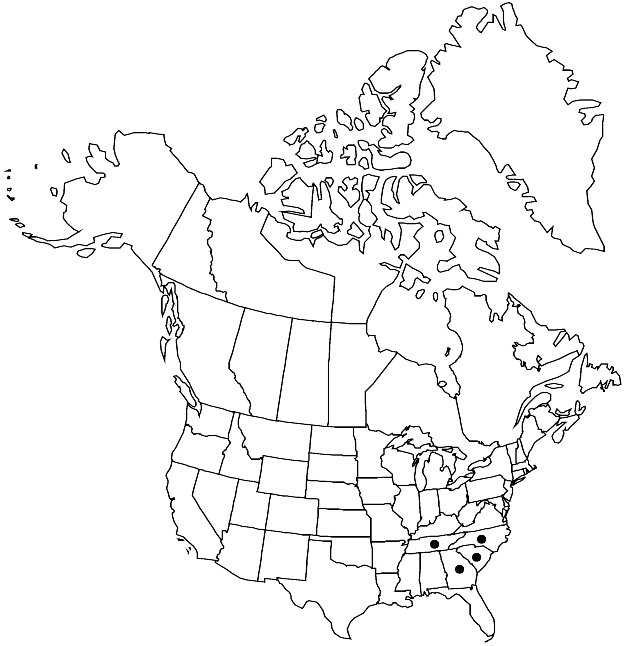Difference between revisions of "Plagiomnium carolinianum"
Ann. Bot. Fenn. 14: 6. 1977.
imported>Volume Importer |
imported>Volume Importer |
||
| Line 56: | Line 56: | ||
|publication year=1977 | |publication year=1977 | ||
|special status=Endemic | |special status=Endemic | ||
| − | |source xml=https:// | + | |source xml=https://bitbucket.org/aafc-mbb/fna-data-curation/src/2e0870ddd59836b60bcf96646a41e87ea5a5943a/coarse_grained_fna_xml/V28/V28_366.xml |
|genus=Plagiomnium | |genus=Plagiomnium | ||
|species=Plagiomnium carolinianum | |species=Plagiomnium carolinianum | ||
Latest revision as of 21:35, 5 November 2020
Erect stems 2–3(–5) cm, not dendroid; sterile stems to 5(–20) cm. Leaves green to dark green, crisped and contorted and somewhat spreading when dry, transversely undulate when moist, oblong-lingulate, oblong, or oblong-elliptic, 5–8(–10) mm; base long-decurrent; margins toothed to near base, teeth blunt or sometimes sharp, of 1 (or 2) cells; apex retuse or emarginate, rarely truncate or rounded, usually short-mucronate; costa subpercurrent, percurrent, or short-excurrent; medial laminal cells short-elongate or ± isodiametric, (15–)20–35 µm, somewhat smaller near margins, sometimes in ill-defined rows, collenchymatous, walls pitted; marginal cells linear, in (2–)3–4 rows. Sexual condition synoicous. Seta 1–4, yellow-green, dark red to blackish with age, 2–4 cm. Capsule horizontal to pendent, oblong-cylindric, 2.5–3 mm, neck not distinct; operculum long-rostrate. Spores 30–35 µm.
Phenology: Capsules mature summer.
Habitat: Along streams or waterfalls on rock, humus, moist granite cliffs
Elevation: low elevations
Distribution

Ga., N.C., S.C., Tenn.
Discussion
Plagiomnium carolinianum and P. undulatum, an apparent introduction in British Columbia, are differentiated from other species of Plagiomnium by their long, usually oblong-lingulate or lingulate leaves, which are transversely undulate when moist, and the relatively small size of the laminal cells. Plagiomnium undulatum, to date known only from south-coastal British Columbia, is a much larger plant than P. carolinianum with longer leaves, and its erect stems often branch distally, forming irregular, palm treelike heads. While other species of Plagiomnium have straight capsules, the capsules of P. carolinianum are slightly curved when dry.
Selected References
None.